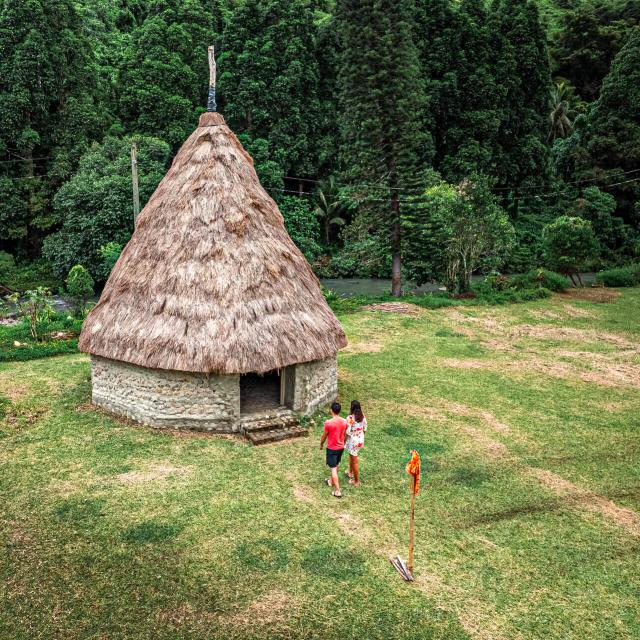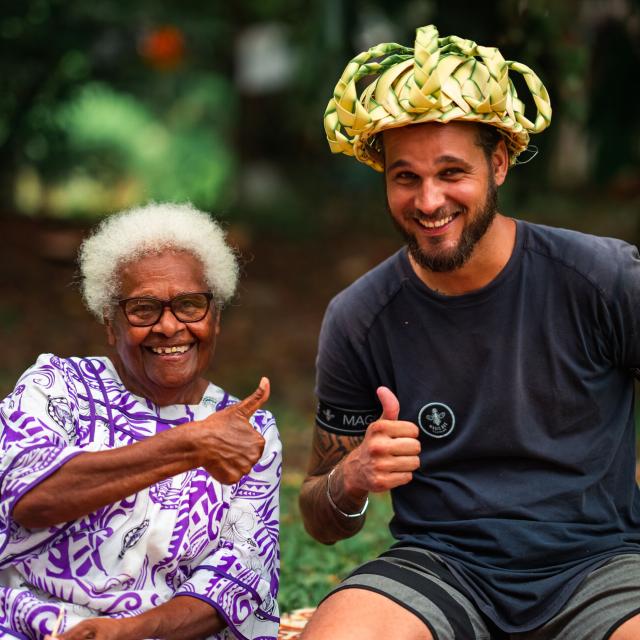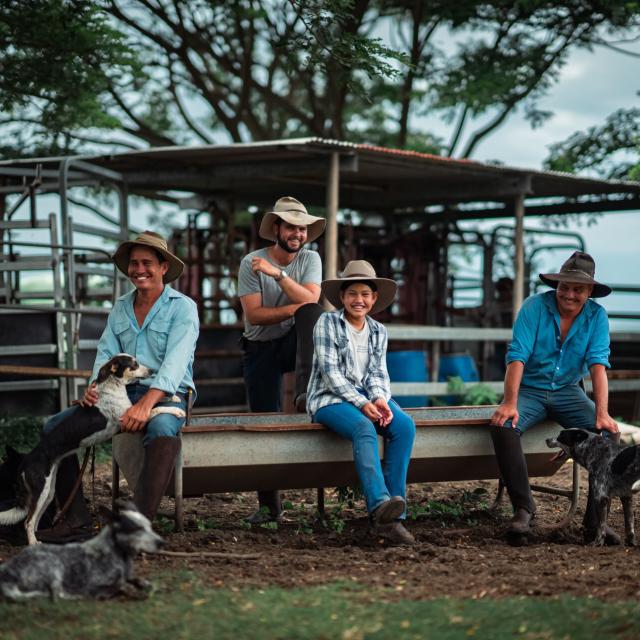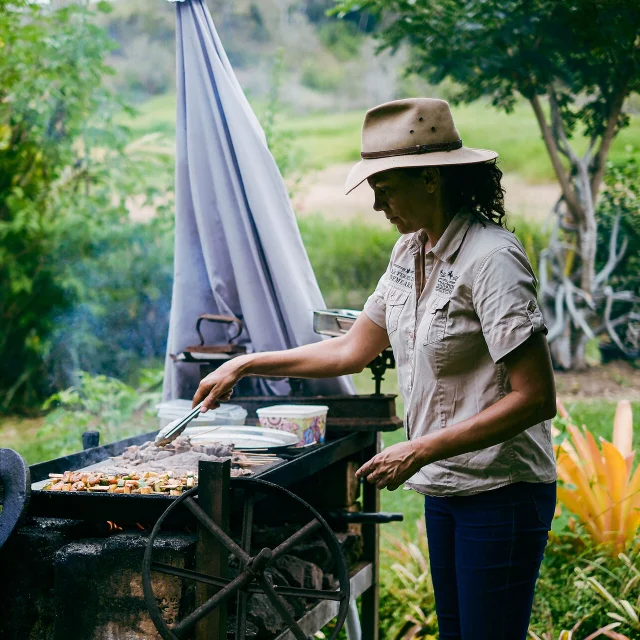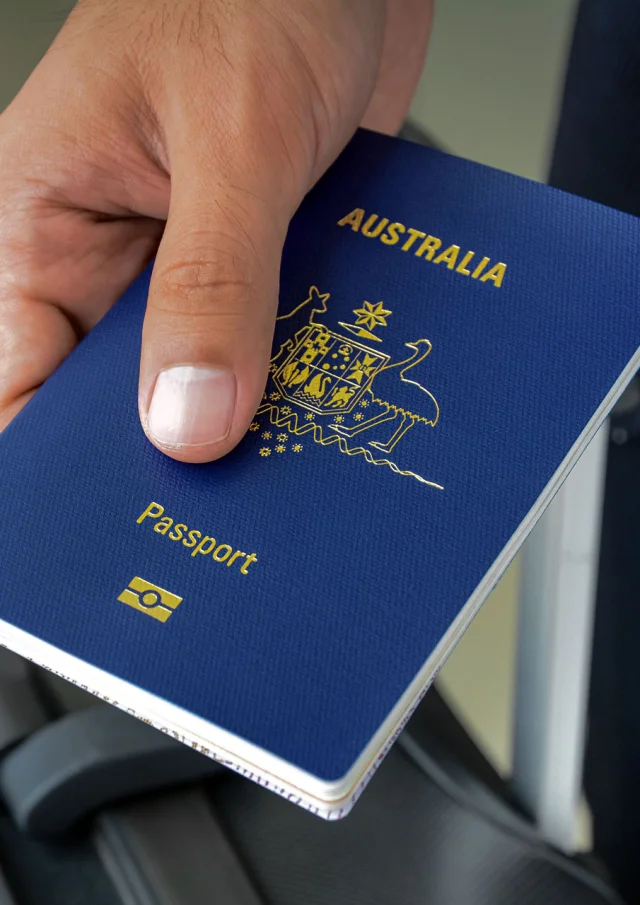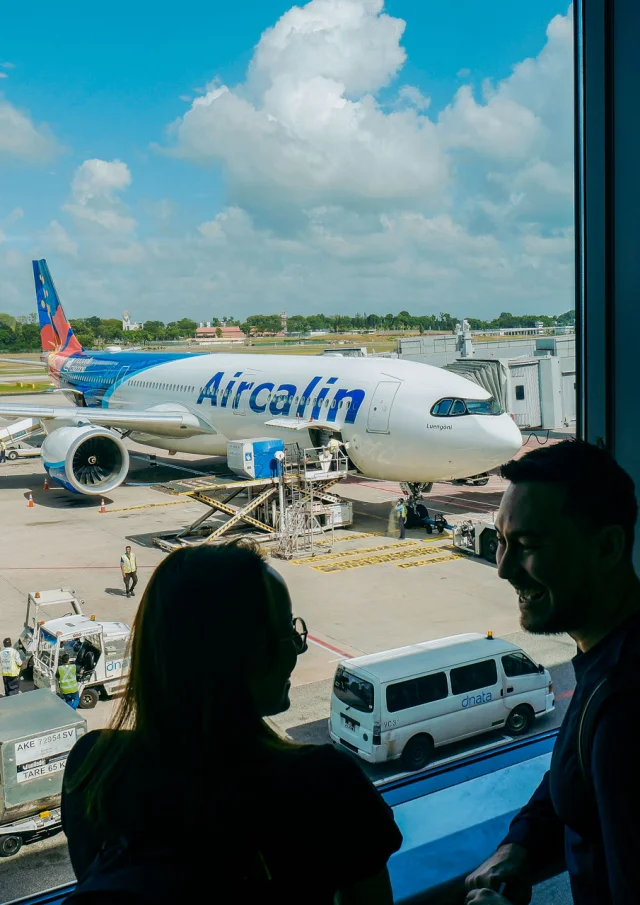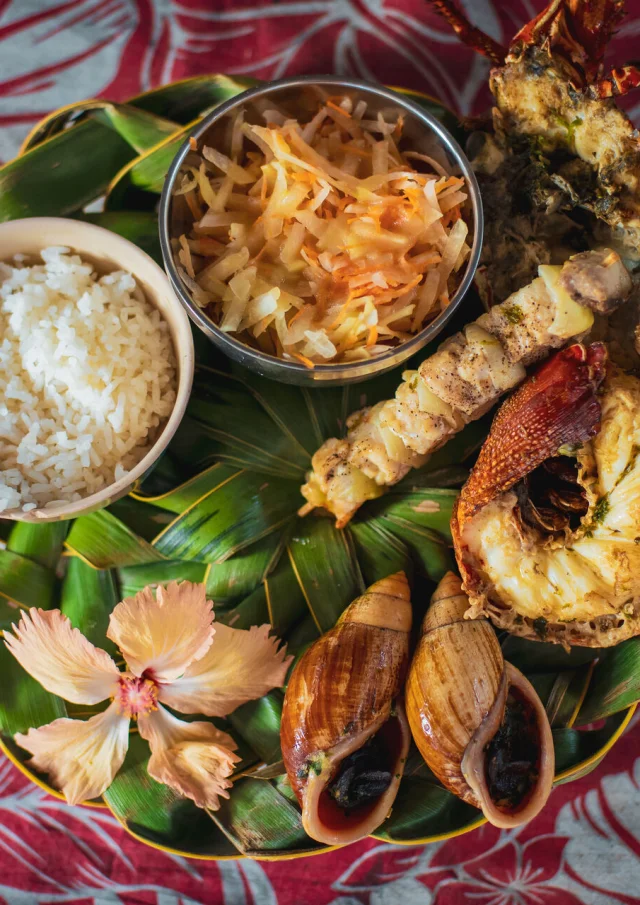New Caledonia is defined by remarkable linguistic diversity. In addition to French, the official language — spoken with a distinct local accent and enriched by unique expressions — the territory is home to 28 Kanak languages still in use, 11 dialects, and several vernacular languages introduced through Oceanian, Polynesian, and Asian communities over the course of history (Chinese, Futunian, Indonesian, Japanese, Javanese, Ni-Vanuatu, Tahitian, Vietnamese, Wallisian, etc.).
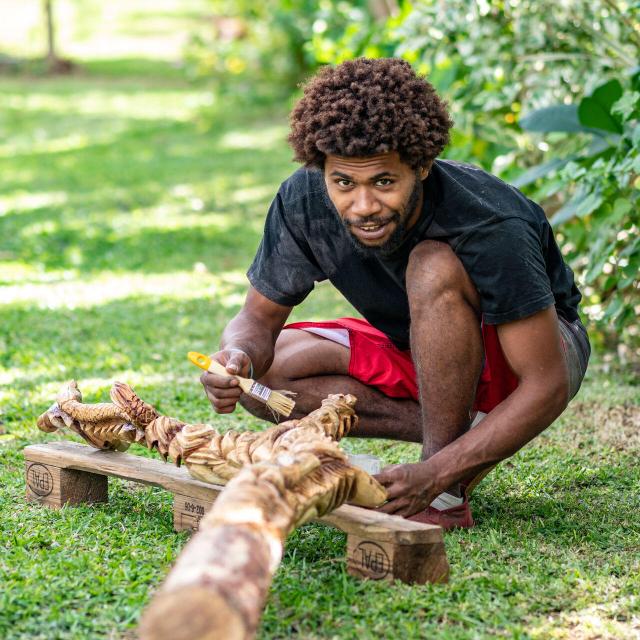 Kanak woodcarver in New Caledonia
Kanak woodcarver in New Caledonia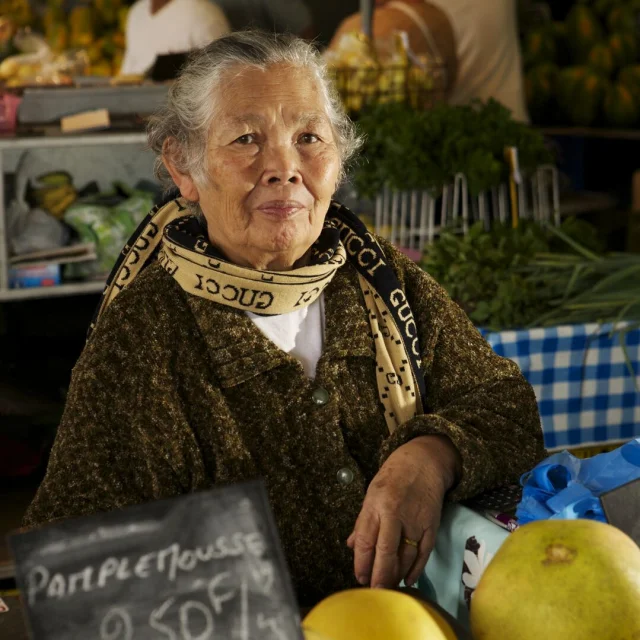 Portrait of a Caledonian Woman
Portrait of a Caledonian Woman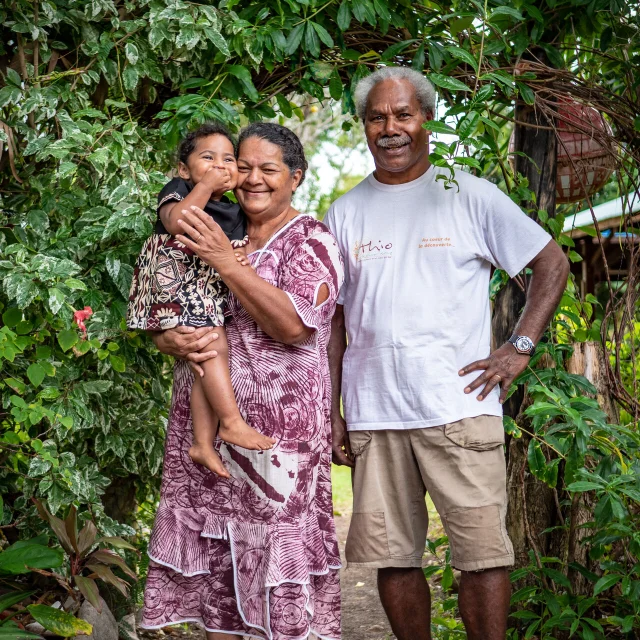 Portrait of a New Caledonian Family
Portrait of a New Caledonian Family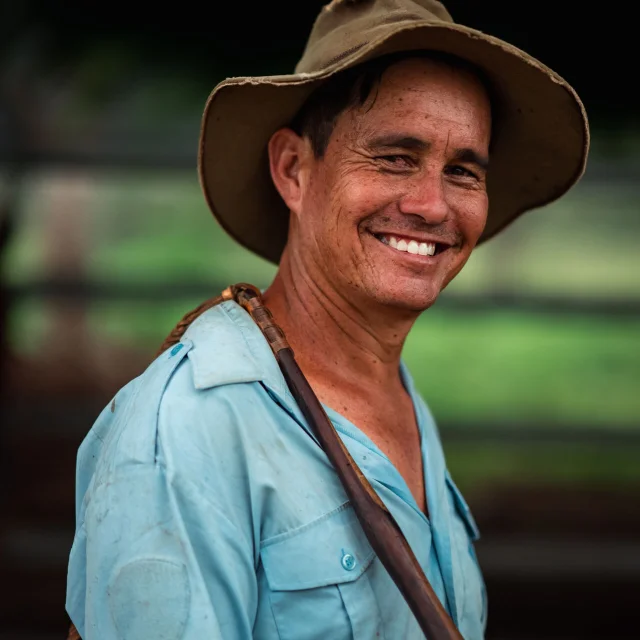 Portrait of a "broussard"
Portrait of a "broussard"
